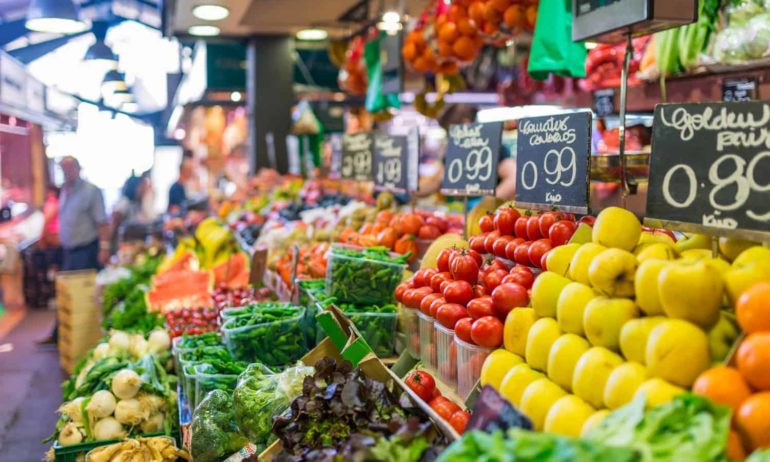The following is an excerpt from Nourished Planet: Sustainability in the Global Food System, published by Island Press in June of 2018. Nourished Planet was edited by Danielle Nierenberg, president of Food Tank, and produced with support from the Barilla Center for Food & Nutrition.
Overall, the highest proportion of the chronically hungry are poor, and many of them are small farmers. Volatile or unstable food prices can put those with low incomes in the poorest countries at the greatest risk, because they spend the highest proportion of their incomes on food of any group in the world. The World Bank estimates that the 2007–2008 world food price crisis kept or pushed 105 million already-poor people below the poverty line in low-income countries.
In 2008, and again in 2010, global food prices soared, plunging millions worldwide into poverty. Riots occurred in at least 48 countries, according to the World Food Programme (WFP), and millions of people joined the ranks of the hungry. In developing countries, where many people spend 60 to 80 percent of their income on food alone, higher food prices led to widespread malnutrition and civil unrest.
The phenomenon of food price volatility—the variation, or rapid jump, in food prices, especially over a short period of time—has taken a dramatic toll on eaters in poor countries over the past decade. From July 2010 to February 2011, the FAO Food Price Index, which measures world food prices, skyrocketed by 38 percent, topping a peak reached during the 2007–2008 food and financial crisis. Although increases in yields over the past few years have stabilized the global food price index, policymakers, farmers, and funders and donors need to remain vigilant in monitoring world food prices and their sudden, unpredictable changes.
To understand how food prices affect developing countries and what must be done at a policy level, it is important to separate the interconnected issues that determine food prices. Stock markets, politics, social stability, and climate change are four of the large issues that together create instability in food prices.
Food markets are distinctive in that both supply and demand curves are unpredictable. Large price changes can occur over time, influenced by actions and incidents economists refer to as “shocks.” Shocks are now more frequent, resulting in greater price volatility. Supply shocks can be caused by extreme weather (such as droughts in Russia and China and floods in Australia and South Africa), the production of biofuels, and the scarcity of natural resources. Demand shocks can result from unanticipated policy decisions, social upheavals, and sudden economic growth in developing countries.
The financial markets play a large role in demand shocks. According to recent articles in Time and The Atlantic and a report from the Institute for Agriculture and Trade Policy, financial speculation has undermined the commodities market’s ability to act as a stabilizing force for farmers, buyers, and consumers. Food prices once again reached 2008’s record levels in 2012, according to the FAO, and Oxfam has warned that the price of staples such as wheat and rice may double in the next 20 years. These prices are no longer driven by simple supply and demand but instead by the activities of financial speculators.
In the past, commodity prices were determined by such real-life factors as quality and supply and demand. Now it is largely perception of the market that determines the price of a commodity. In 2008, for example, investors’ trepidation about the drought in Australia affected the pricing of all wheat, even different varieties grown elsewhere in the world. These fears turned out to be unfounded; in fact, 2008 was an excellent year for wheat. Data from the U.S. Department of Agriculture (USDA) found that 657 million bushels of wheat remained in silos after the buying season.
Financial speculators now dominate the commodities market, holding a hefty 60 percent of some market shares compared with the more modest 12 percent they held 15 years ago. They have plenty of incentives to continue business as usual, as Brett Scott, a writer for The Ecologist, points out: “Goldman Sachs [is] estimated to have made more than $1 billion in 2009 alone and Barclays as much as £340 million [about $US441 million] a year from trading food commodities.” Commodities now account for more than $126 billion in investments.
Click HERE to purchase Nourished Planet today! Food Tank readers can enjoy a 20 percent discount with promo code: FOOD.






